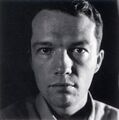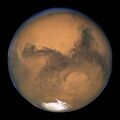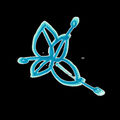Template:Selected anniversaries/August 27: Difference between revisions
No edit summary |
No edit summary |
||
| Line 41: | Line 41: | ||
||1909: Emil Christian Hansen dies ... mycologist who revolutionized beer-making through development of new ways to culture yeast. He financed his education by writing novels. Though he never reached an M.Sc., in 1876, he received a gold medal for an essay on fungi. In 1879, he became superintendent of the Carlsberg breweries. In 1883, he successfully developed a cultivated yeast that revolutionized beer-making around the world, because Hansen by refusing to patent his method made it freely available to other brewers. He also proved there are different species of yeast. Hansen separated two species: Saccaromyces cerevisae, an over-yeast (floating on the surface of the fermenting beer) and ''S. carlsbergensis''*, an under-yeast (laying on the bottom of the liquid). Pic. | ||1909: Emil Christian Hansen dies ... mycologist who revolutionized beer-making through development of new ways to culture yeast. He financed his education by writing novels. Though he never reached an M.Sc., in 1876, he received a gold medal for an essay on fungi. In 1879, he became superintendent of the Carlsberg breweries. In 1883, he successfully developed a cultivated yeast that revolutionized beer-making around the world, because Hansen by refusing to patent his method made it freely available to other brewers. He also proved there are different species of yeast. Hansen separated two species: Saccaromyces cerevisae, an over-yeast (floating on the surface of the fermenting beer) and ''S. carlsbergensis''*, an under-yeast (laying on the bottom of the liquid). Pic. | ||
||1910: Giovanni Schiaparelli dies ... astronomer and historian. | ||1910: Giovanni Schiaparelli dies ... astronomer and historian. Pic. | ||
||1913: Chemist Martin Kaymen born ... together with Sam Ruben, co-discovered the synthesis of the isotope carbon-14 on February 27, 1940, at the University of California Radiation Laboratory, Berkeley. Pic search yes: https://www.google.com/search?q=martin+kamen | |||
File:Norman F. Ramsey Jr.jpg|link=Norman Foster Ramsey Jr. (nonfiction)|1915: Physicist [[Norman Foster Ramsey Jr. (nonfiction)|Norman Foster Ramsey Jr.]] born. He will be awarded the 1989 Nobel Prize in Physics for the invention of the separated oscillatory field method, which will have important applications in the construction of atomic clocks. | File:Norman F. Ramsey Jr.jpg|link=Norman Foster Ramsey Jr. (nonfiction)|1915: Physicist [[Norman Foster Ramsey Jr. (nonfiction)|Norman Foster Ramsey Jr.]] born. He will be awarded the 1989 Nobel Prize in Physics for the invention of the separated oscillatory field method, which will have important applications in the construction of atomic clocks. | ||
||1921: Gérard Debreu born ... economist and mathematician, Nobel Prize laureate. | ||1921: Gérard Debreu born ... economist and mathematician, Nobel Prize laureate. Pic. | ||
||1924: William Bayliss dies ... physiologist who, in 1902 co-discovered the first hormone (with the British physiologist Ernest H. Starling). They found a certain chemical substance is secreted when food comes into contact with part of the small intestine. This chemical substance, which they named secretin, upon being carried by the blood to the pancreas, stimulates the secretion of pancreatic juice, the most important of the digestive juices. They coined the word “hormone” based on a Greek word for “to set in motion.” Bayliss also studied the use of saline injections to counteract shock during surgery. He proposed the use of gum-saline injections for wound shock to saved many lives of wounded soldiers in WW I. Pic. | ||1924: William Bayliss dies ... physiologist who, in 1902 co-discovered the first hormone (with the British physiologist Ernest H. Starling). They found a certain chemical substance is secreted when food comes into contact with part of the small intestine. This chemical substance, which they named secretin, upon being carried by the blood to the pancreas, stimulates the secretion of pancreatic juice, the most important of the digestive juices. They coined the word “hormone” based on a Greek word for “to set in motion.” Bayliss also studied the use of saline injections to counteract shock during surgery. He proposed the use of gum-saline injections for wound shock to saved many lives of wounded soldiers in WW I. Pic. | ||
||1926: George Brecht born ... chemist and composer. | ||1926: George Brecht born ... chemist and composer. Pic (striking). | ||
||1926: Kristen Nygaard born ... computer scientist and academic. | ||1926: Kristen Nygaard born ... computer scientist and academic. Pic. | ||
File:George_Brecht.jpg|link=George Brecht (nonfiction)|1926: Chemist and composer [[George Brecht (nonfiction)|George Brecht]] born. He will be a conceptual artist and avant-garde composer, as well as a professional chemist who will work as a consultant for companies including Pfizer, Johnson & Johnson, and Mobil Oil. | File:George_Brecht.jpg|link=George Brecht (nonfiction)|1926: Chemist and composer [[George Brecht (nonfiction)|George Brecht]] born. He will be a conceptual artist and avant-garde composer, as well as a professional chemist who will work as a consultant for companies including Pfizer, Johnson & Johnson, and Mobil Oil. | ||
| Line 62: | Line 64: | ||
||1939: First flight of the turbojet-powered Heinkel He 178, the world's first jet aircraft. | ||1939: First flight of the turbojet-powered Heinkel He 178, the world's first jet aircraft. | ||
||1945: Jan Sloot dies ... computer scientist and electronics technician. Pic search yes: https://www.google.com/search?q=jan+sloot | ||1945: Jan Sloot dies ... computer scientist and electronics technician. Pic search yes: https://www.google.com/search?q=jan+sloot | ||
| Line 77: | Line 77: | ||
||1962: The Mariner 2 unmanned space mission is launched to Venus by NASA. | ||1962: The Mariner 2 unmanned space mission is launched to Venus by NASA. | ||
||1977: Gersh Budker dies ... physicist and academic. | ||1977: Gersh Budker dies ... physicist and academic, specialized in nuclear physics and accelerator physics. Pic search yes: https://www.google.com/search?q=gersh+budker | ||
||1988: John Francis Riordan dies ... mathematician and the author of major early works in combinatorics, particularly Introduction to Combinatorial Analysis and Combinatorial Identities. Pic, book cover: https://www.amazon.com/Introduction-Combinatorial-Analysis-Dover-Mathematics/dp/0486425363 | ||1988: John Francis Riordan dies ... mathematician and the author of major early works in combinatorics, particularly Introduction to Combinatorial Analysis and Combinatorial Identities. Pic, book cover: https://www.amazon.com/Introduction-Combinatorial-Analysis-Dover-Mathematics/dp/0486425363 | ||
||1999: Enzo Martinelli born ... mathematician, working in the theory of functions of several complex variables: he is best known for his work on the theory of integral representations for holomorphic functions of several variables, notably for discovering the Bochner–Martinelli formula in 1938, and for his work in the theory of multi-dimensional residues. | ||1999: Enzo Martinelli born ... mathematician, working in the theory of functions of several complex variables: he is best known for his work on the theory of integral representations for holomorphic functions of several variables, notably for discovering the Bochner–Martinelli formula in 1938, and for his work in the theory of multi-dimensional residues. Pic. | ||
File:Mars 23 aug 2003 hubble.jpg|link=Mars (nonfiction)|2003: [[Mars (nonfiction)|Mars]] makes its closest approach to Earth in nearly 60,000 years, passing 34,646,418 miles (55,758,005 km) distant. | File:Mars 23 aug 2003 hubble.jpg|link=Mars (nonfiction)|2003: [[Mars (nonfiction)|Mars]] makes its closest approach to Earth in nearly 60,000 years, passing 34,646,418 miles (55,758,005 km) distant. | ||
Revision as of 06:52, 16 October 2019
1858: Mathematician Giuseppe Peano born. He will do pioneering work in mathematical logic and set theory.
1915: Physicist Norman Foster Ramsey Jr. born. He will be awarded the 1989 Nobel Prize in Physics for the invention of the separated oscillatory field method, which will have important applications in the construction of atomic clocks.
1926: Chemist and composer George Brecht born. He will be a conceptual artist and avant-garde composer, as well as a professional chemist who will work as a consultant for companies including Pfizer, Johnson & Johnson, and Mobil Oil.
1934: Marie Curie, French-Polish physicist and chemist dies. She conducted pioneering research on radioactivity, discovering the elements polonium and radium.
1938: Mathematician and philosopher Edmund Husserl publishes new class of Gnomon algorithm functions based on transcendental consciousness as the limit of all possible knowledge.
2003: Mars makes its closest approach to Earth in nearly 60,000 years, passing 34,646,418 miles (55,758,005 km) distant.
2017: Dennis Paulson of Mars wins Pulitzer Prize for Best Reality Television Show.
2019: Chromatographic analysis of Blue Foliage "at least five new shades, possibly six" of the color blue.







